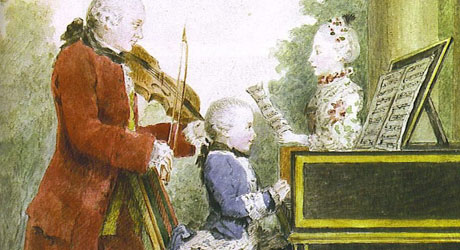
Symphony No. 29 in A Major
One of the more frequently performed early symphonies of Mozart.

One of the more frequently performed early symphonies of Mozart.
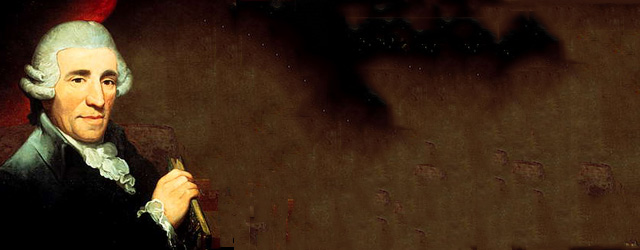
This remarkable work was composed by Haydn while he was on his second visit to London in 1792.
It was initially prompted by a rivalry: Haydn’s former pupil Ignaz Pleyel had composed and performed a “sinfonia concertante” in London in early 1792, featuring a number of solo instruments set off against the orchestra. This musical form was very much in vogue in both Paris and London at the time. In response, the impresario and violinist Johann Peter Salomon, the sponsor of Haydn’s London concerts, asked Haydn to compose a similar work for an upcoming concert in two months.
Haydn set to work and composed this sparkling piece work in short order. It features a solo quartet (violin, ‘cello, oboe and bassoon), as well as a full symphony orchestra, in a combination of concerto and concerto grosso styles.
There are some unusual features: in the first movement the solo quartet enters in the midst of the orchestral theme, engaging the orchestral forces even before their own solo entrance.
The middle movement features chamber music among the soloists, and is almost conversational in style.
The last movement starts off as a conventional allegro, but is suddenly interrupted by a number of operatic recitatives played by the solo violin – in the London premiere by Salomon himself.
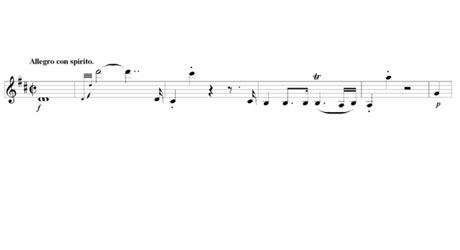
Mozart wrote this work in 1782 for the ceremonies surrounding the ennoblement of Sigmund Haffner, a member of a prominent Salzburg family. He originally wrote this piece as a six-movement serenade, including an introductory march and two minuets. He wrote it in just a few short weeks in the summer, and there is no record of a performance at that time. However, in December 1782 Mozart decided he wanted to perform it in Vienna in a concert and asked his father for the score.
When he received the score, Mozart was astonished at how good it was, because he had forgotten every note of it! He promptly went about revising the piece for his upcoming performance. He dropped the introductory march and one minuet and organized it into the familiar four-movement symphony we know today. A few years later he added flutes and clarinets to the outer movements.
The symphony’s outer movements are full of brilliant passagework, flair, and dash. Mozart specified that the first movement was to be played “with great fire.” It opens with a famous octave leap upwards, and then downwards, with embellishments — a theme which is repeated throughout. The second movement is a simple (yet subtle) andante, with a relaxed atmosphere. It first features a lyrical violin melody accompanied by a wind chorale; the contrasting second theme is introduced by the 2nd violins and violas. The third movement is a foursquare minuet, with a lyrical counterpoint in the trio. The final presto (according to Mozart, “as fast as possible”) opens with witty understatement, spins out an intimate second theme, and ends with a magnificent triumphal flourish.
— M.F. Tietz
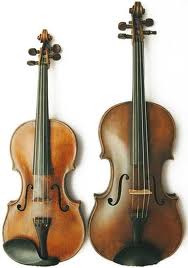
This piece represents one of the highest achievements of Mozart’s art. It is at once a symphony and a concerto, and showcases both the violin and the viola (the latter being an instrument particularly loved and played by Mozart himself).
The orchestra sets the mood at the outset in a magnificent opening section – majestic in style, with elegant contrasting sections, and featuring one of the most dramatic crescendos in all of the musical literature. The soloists make their subtle entrance entwined with the end of the opening orchestral section. Mozart gives the soloists their own distinctive themes, with orchestral accompaniment interspersed with vigorous symphonic sections; a lengthy double cadenza leads to a rousing ending.
The lovely second movement is set in the contrasting key of C minor, which Mozart uses to convey themes of great poignance and emotion (albeit in his restrained classical style), with its own cadenza for the soloists. The third movement is a spritely rondo, with lively themes taken up by the orchestra and soloists in turn. After a final rising flourish by the soloists, the piece ends joyously
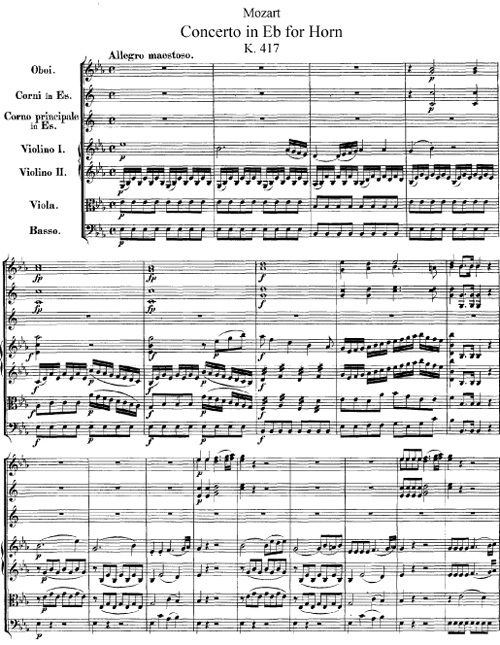
Between 1783 and 1791 Mozart wrote four horn concertos and a horn quintet. All of these works were dedicated to one person – Joseph Leutgeb. Leutgeb was an acclaimed performer and one of Mozart’s closest friends in Vienna. Indeed, their friendship was so close that it enabled Mozart to take the liberty of inscribing on the title page of the concerto: “Mozart takes pity on Leutgeb, ass, ox, and simpleton, at Vienna, March 27, 1783.”
Typically childish Mozartean cynicism aside, all the four concertos long ago formed an important part of the horn repertoire and even today continue to challenge even the most celebrated masters of the instrument. The first movement of the concerto is a sonata allegro based on two contrasting themes. The first theme has a march-like character and solid tonal plan – in contrast to the second “female” theme with its singing quality. A new episode (B minor) introduced in the development section deserves special attention.
The second movement is a peaceful Andante with beautiful cantilenas in the solo part. These arresting melodies must have been a perfect match to Leutgeb’s famous singing tone on the horn. The last movement is a rondo (ABACABA) in the rhythm of a cheerful dance. An important element of this movement is the frequent use of trills, which – when the concerto was written – created tremendous difficulty for the performer.
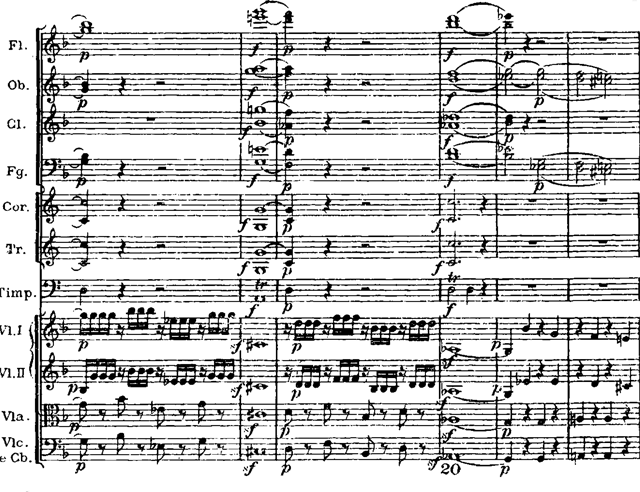
Mozart completed Don Giovanni in 1787, and the opera was premiered in Prague on October 29, 1787. Don Giovanni is one of the three operas that resulted from Mozart’s collaboration with the great librettist Lorenzo Da Ponte (the other two operas being Le nozze di Figaro and Cosi fan tutte). Mozart himself called his opera dramma giocosso (literally “merry drama”) and here in the overture we can see how drama and comedy shift as quickly and as unpredictably as only one man – Mozart – could do.
The overture begins with the Commendatore theme. The tragic chords of the very beginning, the following ostinato rhythm, as well as the ascending and descending lines in the first violins and flutes create the impression of something fateful to follow. Contrasting with the general dark mode of the introduction of the overture is the sonata allegro with its typical Mozartean wit and energy.
The second theme of the sonata allegro deserves special attention: its forte–piano contrast clearly represents the Don Giovanni–Leporello tandem. Originally Mozart designed the overture to lead directly to the music of the first act, showing that the overture is an inseparable part of the entire drama.
It is a well known fact that it took only one day for Mozart to complete the overture to the opera (and that day happened to be the day before the opera’s premiere). After the death of Mozart, Johann Andre adopted the end of the overture for concert performance, and it is Andre’s version that you will hear today.
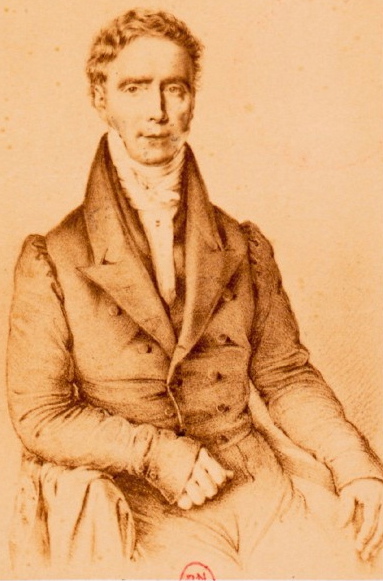
Born in Venice, Domenico Dragonetti (1763-1846) was the pre-eminent double-bass virtuoso of his time. Early on, he displayed his remarkable musical gifts on the violin and guitar before turning to the double bass, at which he excelled.
Appointed to the orchestra at San Marco in Venice at the age of 18, he became famous and sought after as a performer in Italy, Russia and England. He took up residence in London in 1794 where, except for occasional trips, he resided for the rest of his life. He made the acquaintance of both Haydn and Beethoven, whom he favorably impressed with his playing.
In addition to his performing career, Dragonetti composed many works for the double-bass, with this concerto being among the best-known. It is a three-movement work in the classical style, and displays the full range of the double bass, with much of the work in the high register. There are pyrotechnics galore, including passages consisting entirely of harmonics, which indicate the technical brilliance of which Dragonetti was capable.
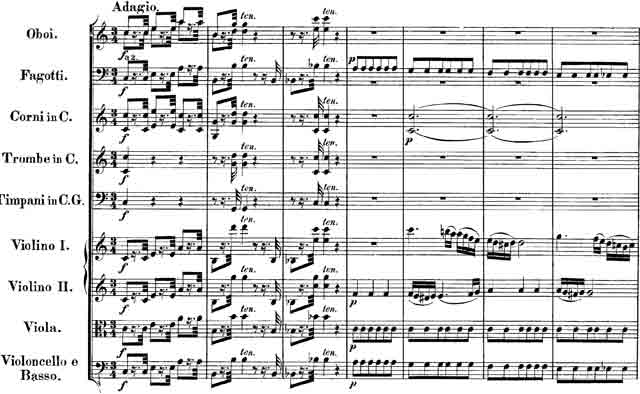
The itinerary says it all:
Oct. 27, 1783, 9:30 a.m: Mozart (then twenty-seven years old) and his wife, Constanze, leave Salzburg, where they had been visiting Mozart’s father. Heading back to their home in Vienna, they spend the first night of their journey in Vögelbruck.
Oct. 28: They arrive in Lambach in time for Mozart to play organ during the morning Mass.
Oct. 29: Opera and party in Ebersberg.
Oct. 30, 9:00 a.m: After three busy days on the road, they arrive in Linz, where they stay with Count Johann Joseph Anton Thun-Hohenstein.
Oct. 31: Mozart dashes off a quick note to his father: “….On Tuesday, November 4th, I am giving a concert in the theater here. And, as I didn’t bring a single symphony with me, I’ll have to write a new one at breakneck speed, since it has to be finished by that time. I must close now, because I have to get to work.”
Nov. 4 (four days later): Mozart conducts the premiere of his new symphony with Count Thun’s orchestra.
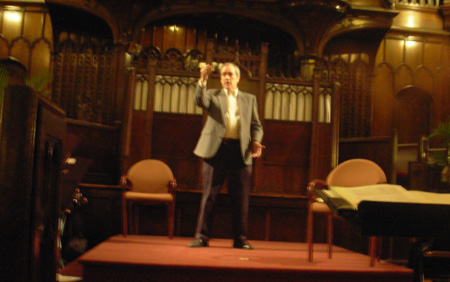
Mozart’s one-act comic opera “der Schauspieldirektor”, or The Impresario, was originally composed in 1786 as a “Singspiel” – a German type of play interspersed with various musical numbers – at the request of Emperor Joseph II for a private performance at the Schönbrunn Palace in Vienna. Mozart wrote The Impresario at around the same time as The Marriage of Figaro.
It contains marvelous music – a well-known overture, and four vocal numbers. The original libretto, however, presents a number of challenges in mounting a full-fledged production. For this performance, we are fortunate indeed to have an English adaptation authored by William J. Brooke, who also happens to be our stage director and play the title role of Impresario (all at once!). In his adaptation, the first two solo arias are largely sung in the original German; the trio and finale are done in English, as is the dialogue.
The story itself is about the woes of an opera company director (Scruples). His scheming assistant (Bluff), who longs to sing bass roles on stage, engages a banker (Mr. Angel) to financially “rescue” the opera company’s upcoming season. In return, Mr. Angel merely requests Scruples to showcase Mr. Angel’s two paramours (Madame Goldentrill and Miss Silverpeal) each of which happens to be an opera singer, and each of which thinks she should be the prima donna for the upcoming opera season!
Of course theatrical and musical fireworks ensue, before leading to a most unlikely (yet satisfactory) conclusion.
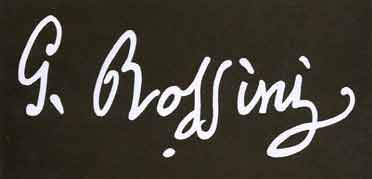
Rossini composed his opera based on the Cinderella story in 1817, one year after writing the Barber of Seville, at the age of 25. Rossini “borrowed” the music for this overture from one of his unperformed operas – standard practice at the time – and it works remarkably well in this context.
As with most Rossini overtures, it opens with a slow section in which one can almost imagine the scolding stepmother and the heroine scrubbing the floors. The following allegro is light and lively. It prominently features the winds (particularly the clarinet, his favorite instrument), as well as two versions of the famous long “Rossini crescendo” presaging a happy ending to the story.